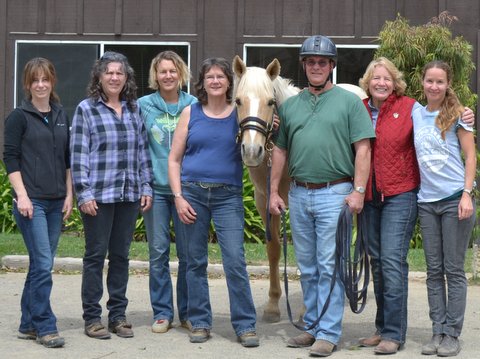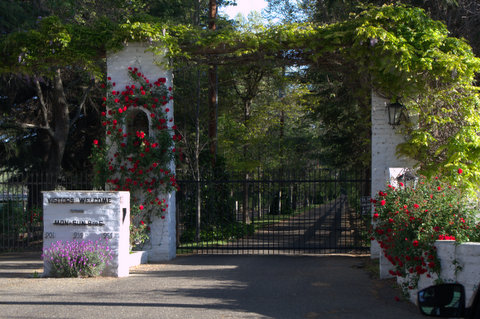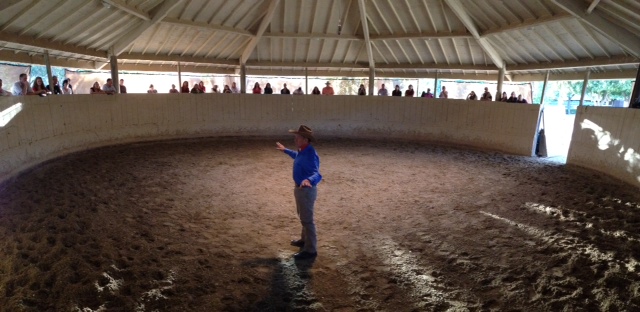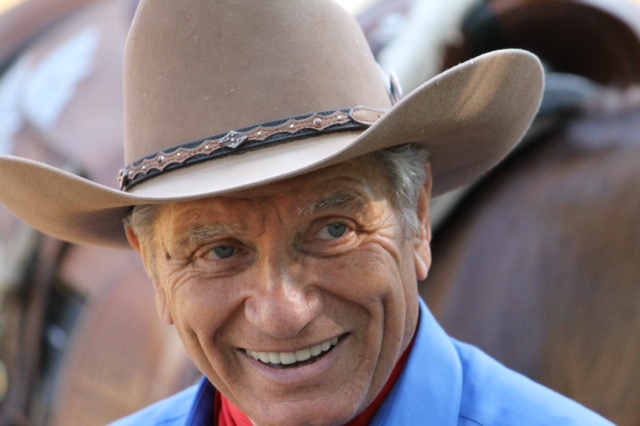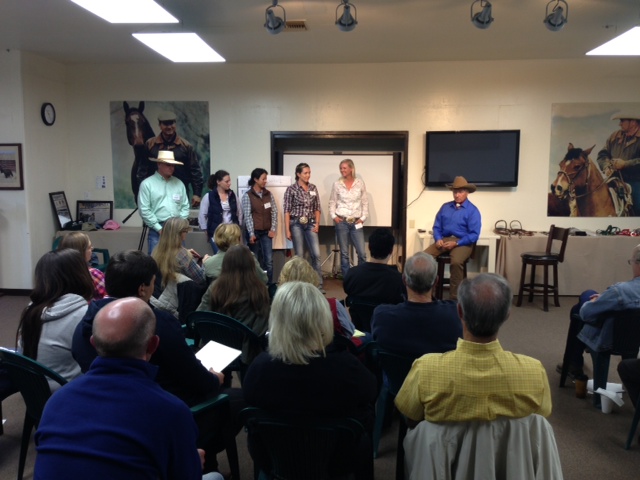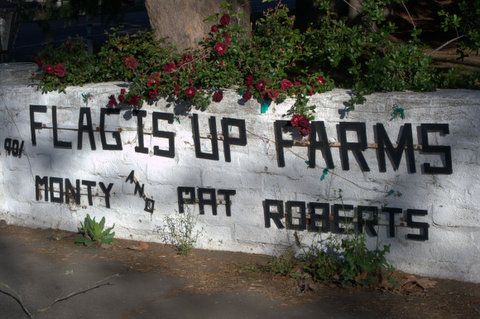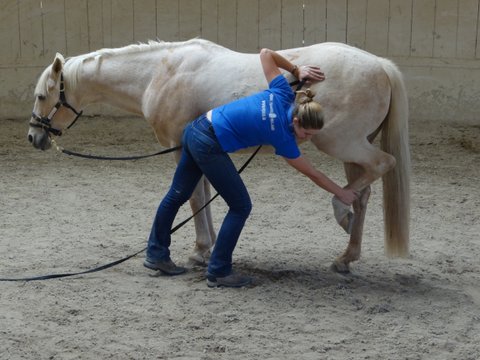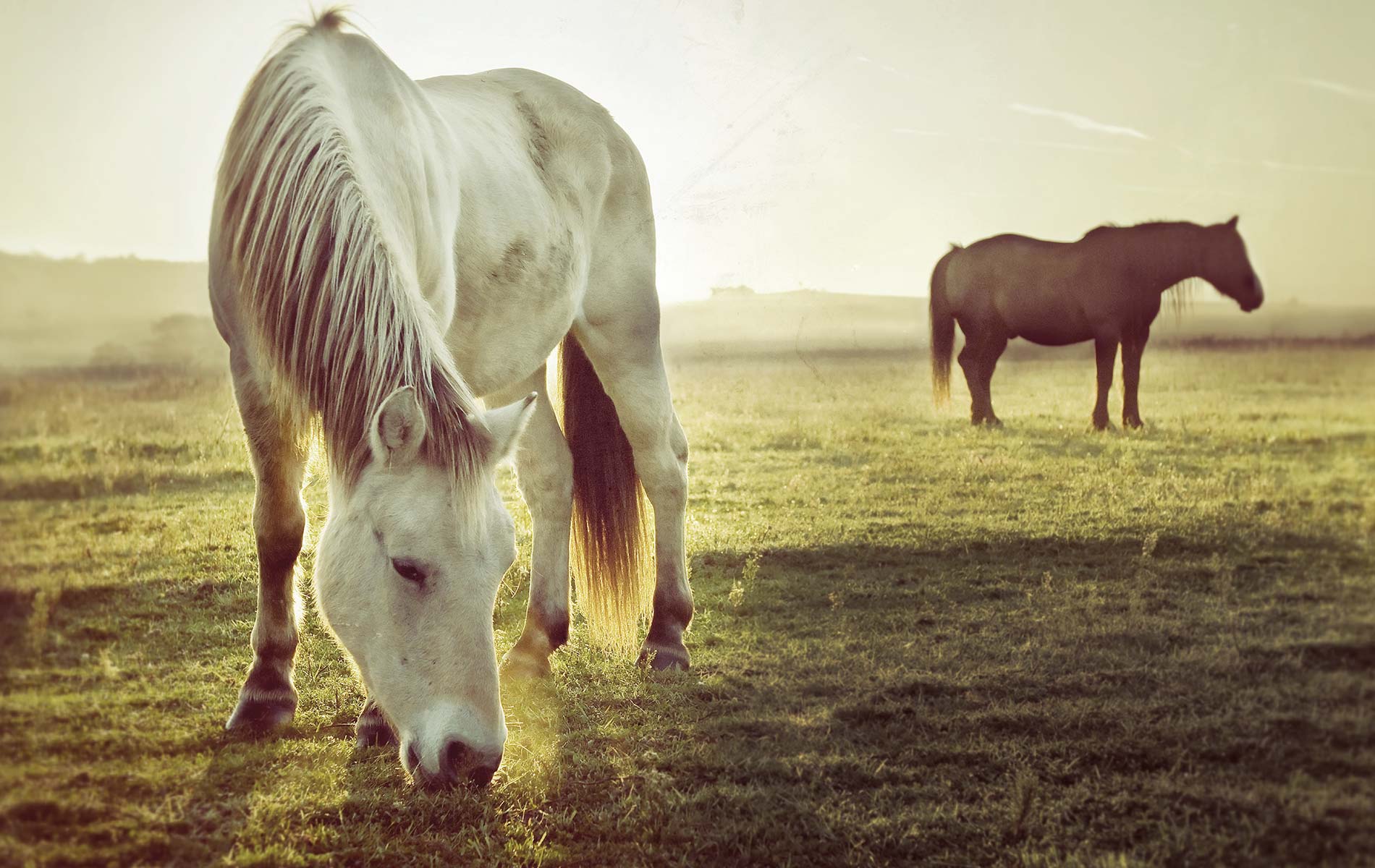
vie-magazine-monty-roberts-feature
Creating a Kinder World
Monty Roberts’s Join-Up Program
By Kelly Beasley | Photos courtesy of Monty and Pat Roberts Inc
The world has been a better place for horses since the inception of Monty Roberts’s unique system, Join-Up, for “gentling” them. Join-Up is mostly about understanding, reading, and responding to a horse’s body language. It is a method that allows a trainer to introduce a beginner horse to new things, such as a saddle and a bridle, and to have a rider on its back, usually in about thirty short minutes. This is an unheard-of time frame in the traditional “breaking” of a horse. Join-Up is achieved without using any force or violence; it is all based on trust and on positive and negative consequences.
Humanity has a lot to learn from listening to horses.
In the archaic tradition of breaking a horse, the trainer would lasso him, if necessary, and then tie his head to an immovable object, or hobble (tie) a leg up, and/or blindfold him, among other things. These are all terrifying experiences for the horse: he is stripped of his primary defenses and has a potential predator standing right next to him. His instinct says that his life is in danger and that his only defense is to fight for his life. Restrained from fleeing, he will fight, pull, kick, and do everything possible to free himself from the predator—in this case, the saddle and the rider. In his mind, the saddle is another animal jumping on his back ready to dig its claws into him, and the rider’s legs are a predator about to rip his insides out at his flanks. Since trust and cooperation have never been established, the horse instinctively believes that the trainer is going to kill him.
Only after the horse has fought to exhaustion—or his will has been broken—will he give up. At times, this process proves fatal for the horse and/or the rider. It creates a horse that learns to fear and mistrust man, resulting in an apathetic horse. He will comply, but only because he must. There is no joy in his work. The horse’s experience is never once considered.
With Monty Roberts’s technique, however, the horse is the primary focus.
- The April Join-Up clinic participants and trainers
- The picturesque entrance to Flag Is Up Farms—visitors welcome!
To better understand how Join-Up works, we must know a little about the horse’s instincts. The horse is an animal of prey, and evolution has taught him that when he is in danger, he must run. He has an ingrained maximum distance he can safely run until many different factors tell him he must stop and reassess his situation; that distance is roughly one-fourth of a mile. After that distance, he will stop to look back at what was chasing him and try to negotiate a deal if he is still being pursued. To keep running is life threatening as he may run out of energy, lose the herd, or run into a different predator. In nature, a lone horse is a dead horse. Safety is in numbers, which is why horses travel in herds.
Join-Up utilizes this knowledge by teaching you to send a horse “away,” or shoo it, using your body language. (Sending him away is easiest to achieve in a large round pen so you don’t have to run.) In doing so, you are, in effect, emulating the lead mare and alienating the horse from the herd, or you are acting like a predator. Out in the wild, either scenario has the potential to become deadly.
After the horse has gone the quarter-mile distance, he will try to communicate with you by “asking” if he can stop running and come back to you. This is why it is called Join-Up. You have given the horse a choice to stay away and keep running or to join you and have your protection. It works with the horse’s nature to want to connect with another being, and 99 percent of the time they choose to be with the trainer rather than to keep away.
The horse will “ask” to come in using a series of nonverbal signals. He will make licking and chewing movements, turn his ear in towards you, drop his head, and try to come closer to you. Once he has asked “appropriately” with these gestures, you then turn your body in a forty-five-degree angle to the horse. Usually the horse will walk right up to you, even if he is not a previously tamed horse. He understands that you speak his “language,” and at that point of the Join-Up, the horse is saying that he trusts you to be his leader. Therefore, you can gently begin to introduce him to things such as a saddle, a bridle, and a rider.
The horse may flee now and again simply because it’s ingrained in his DNA to do so. He has the choice to flee if he feels he must, but once he realizes there is no real danger, he will come right back to you, his new safe zone. It is incredible. No violence or force is necessary, and you create a willing, trusting partnership with the horse.
This is a far cry from the traditional, authoritarian method. There are certain details and subsequent steps of Join-Up that are left out of this explanation, but this gives you the general idea of how it works.
Horses are the biggest beneficiaries of the method thus far, yet Monty believes that his methods and discoveries for creating an atmosphere of cooperation between a horse and a trainer have much broader implications. His idea is that we can use these concepts with each other to create more harmonious relationships among humans. He works with large corporations, penal systems, PTSD victims, and others using the horses as teachers of communication and trust.
In April 2014, I was incredibly fortunate to attend a four-day Join-Up clinic at Monty’s picturesque Flag Is Up Farms in Solvang, California. I wanted to attend so I could better understand how Join-Up helps humans. I also wanted confirmation that when I was attempting Join-Up with a horse, I was doing it correctly. I learned that in order to work effectively with a horse, one must be truly present. One must be aware of the horse’s mood, intention, energy, and body language in addition to your own.
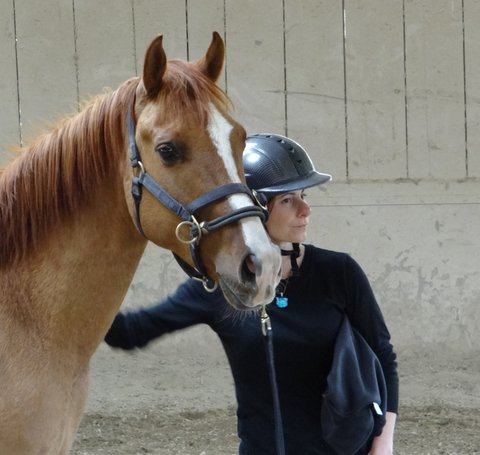
A moment with Nova, Kelly’s first Join-Up horse at the clinic
It was fascinating to learn that the trainer’s intention has as much effect on the horse as the trainer’s body language does—if not more. Minding your thoughts keeps your adrenaline down and can effectively influence your outcome. This translates to life as well and teaches us to be more aware of ourselves in a society that does not nurture these concepts. Those with trauma in their history sometimes have difficulty staying present, but everyone can benefit from this form of communication and trust-building exercise.
Having seen this work up close and having worked with the animals in such an intimate way makes me wonder: Why do people still use violence with each other and with animals? Why is it that we all can’t possess and use the positive traits of love, understanding, compassion, and sympathy? When violence is employed, there is usually a breakdown of communication. It’s a way of saying, “I don’t know what else to do; this is my last resort, so do what I say or I will hurt you,” is it not? It’s a cop-out. Violence curbs learning and creates fear. It does not effectively “teach you a lesson.”
Think back to a time when you were treated unfairly or were hurt physically or emotionally. Did that moment help you or did it create resentment, fear, and anger? Let’s be honest and admit that it did not help you learn any intended “lesson.” What you likely learned is that you don’t like being hit, hurt, and left out. I think we all have traumas in our pasts that may still affect us to this day.
There is something about Join-Up that can lead to a very emotional response for those with trauma in their past, which leads me to why I wrote this article. Ever since learning about this method, I get very emotional when I try to talk about it and I have never fully understood why.
This emotional response and love for the method led me to go see Monty, who was on tour in Georgia about ten years ago. I came back from the tour with a personal explanation from the creator of Join-Up himself as to why I get so emotional.
Before the show, I was fortunate enough to find Monty casually observing his round pen being set up in the arena. This was my chance! Unfortunately for me, my first attempt to speak to him and to have an “amazing experience” from our interaction fell short of my expectations. With great trepidation, I approached him to introduce myself and I said something to the effect of, “Hi, Mr. Roberts. I just want to tell you I love what you are doing and I am a big fan,” or something similar. He was cordial and may have shaken my hand and said thanks; I don’t really remember, but I do remember that almost immediately he “quit” me. He simply turned back to the arena and continued his observation.
I was devastated. I had had a very striking premonition for some time that if I met him, it would be an unforgettable, amazing experience.
I walked away trying to figure out where I had gone wrong, and it finally dawned on me that I hadn’t said anything that would prompt any reaction other than the generic one that I had received. If I didn’t do something quickly, I might lose my opportunity. I realized that I had to throw down, tell him about my emotional reaction, and risk showing him a crying fit that never fails to arise once I start to talk about the method.
Determined, I walked back over to him, and before I even opened my mouth, the tears came, and as soon as he saw the tears, he flipped like a switch. This man suddenly genuinely cared about whatever was going on with me, a total stranger, and, no kidding, I had his full attention and his genuine concern. It was a moment that I will never forget.
I explained through my tears that when I try to tell someone about Join-Up, I cry, and that I didn’t understand why. I won’t go into complete detail, but he asked me a couple of questions as if he already knew the answers to them—he was spot on. It was about my childhood and the revelation was that, as a child, I lived in a world where I did not feel safe.
The connection and emotional expression that I have with Join-Up is one that many other victims can relate to as well. I still have a hard time understanding the true nature of the connection, but the main parallel of my experience to the Join-Up experience is seeing a fearful animal of prey have a “conversation” with its potential predator/violator/abuser that leads to a place of safety and trust as opposed to fear, violence, force, or submission. Somehow, we connect with the horse on another level.
I believe that horses are truly spiritual animals, yet mankind has historically forced these beautiful creatures into submission. I hope for the sake of the world that Monty’s work really does help change humanity for the better. It is his life’s mission. He travels the world holding clinics and workshops teaching us, through the horses, that violence is never the answer.
We love and learn best when treated fairly in an environment of positive consequences for positive actions and negative consequences for negative actions, when given appropriately. People can learn to love each other and care for each other simply by watching how a horse can accept a man as a teammate, a leader, and a friend—using no words, just silent communication, energy, intention, and consequences. Violence is not necessary.
Thank you, Monty.
— V —
To learn more, visit MontyRoberts.com or learn through his video series online at MontyRobertsUniversity.com. You can watch Monty demonstrate Join-Up with a horse for free simply by searching Join-Up on YouTube.com.
Share This Story!
KEEP UP WITH THE LATEST STORIES FROM VIE




